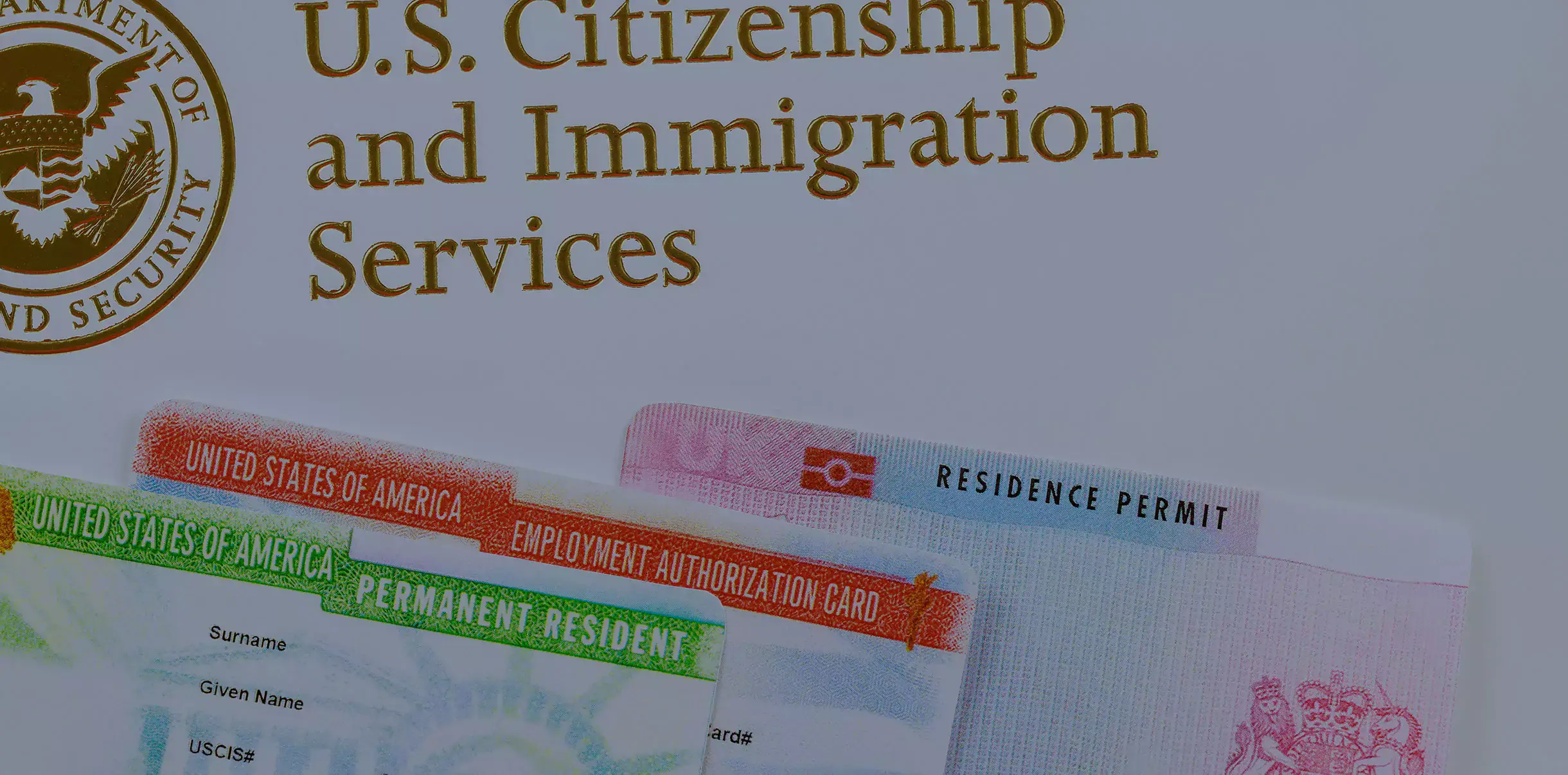Family Members and Dependents
Foreign nationals entering the U.S. on an E-1 or E-2 visa often bring their families with them. U.S. immigration law provides specific benefits for spouses and children of treaty traders and investors, making it easier for families to remain together during their stay. Understanding how dependent status works under the E visa classification is essential for planning long-term residence, education, and employment in the United States.
Eligibility for E-1 and E-2 Dependents
Spouses and unmarried children under the age of 21 are eligible to receive the same visa classification as the principal E-1 or E-2 visa holder. These dependents do not need to be nationals of the same treaty country as the principal applicant. As long as the primary visa holder maintains valid status, eligible family members may remain in the U.S. under derivative E status.
Employment and Education Rights
Spouses of E visa holders are eligible to apply for work authorization by filing Form I-765 with U.S. Citizenship and Immigration Services (USCIS). Once approved, spouses may work for any employer in any lawful capacity, offering a high degree of flexibility and financial support to the family unit. This benefit is exclusive to spouses—children under E status are not permitted to work in the United States.
However, children are allowed to attend school in the U.S. without the need for a separate student visa. They may enroll in public or private schools and pursue higher education at U.S. colleges and universities. Once a child turns 21 or gets married, they are no longer eligible to remain in the U.S. under E derivative status and must seek their own visa classification.
Maintaining Status for Family Members
Like the principal visa holder, dependents must comply with all terms of their visa classification. Any changes to the primary visa—such as expiration, change of status, or loss of eligibility—can directly impact the legal status of dependents. It's important to track expiration dates and submit extension or renewal applications on time to avoid disruptions.
Green Card Options
While the E-1 and E-2 visas offer valuable opportunities for trade and investment-based entry into the United States, they are nonimmigrant visas and do not provide a direct path to permanent residency. However, many E visa holders eventually consider transitioning to a green card to secure long-term status in the U.S. There are several options available depending on the individual's background, business activity, and immigration goals.
If you are considering this transition, consulting a knowledgeable business immigration lawyer can make the process significantly smoother and help avoid status-related pitfalls.
Transitioning from E Visa to Green Card
E visa holders may adjust their status to permanent residency by applying through a separate immigrant visa category. Because E visas are not dual intent, applicants must carefully manage the transition process to avoid jeopardizing their current status. Pollak PLLC helps clients navigate this change by identifying the most appropriate green card category and ensuring the petition is properly documented and timed.
Employment-Based Green Cards
One of the most common routes is through the employment-based (EB) preference categories. Eligible pathways include:
- EB-1 (Extraordinary Ability or Multinational Executive): Ideal for individuals who can demonstrate exceptional achievements in their field or who manage operations for a multinational company with U.S. and foreign offices.
- EB-2 (Advanced Degree or Exceptional Ability): Suitable for professionals with advanced degrees or individuals with special expertise. A National Interest Waiver may apply in certain cases.
- EB-3 (Skilled Workers and Professionals): For individuals in qualified jobs who have received a permanent offer of employment from a U.S. employer.
These categories typically require labor certification (PERM) and employer sponsorship, although some exceptions exist.
Investment-Based Options
For E-2 investors looking to remain in the U.S. permanently, the EB-5 Immigrant Investor Program may be a viable solution. The EB-5 requires a minimum capital investment—currently $800,000 in a targeted employment area (TEA) or $1,050,000 in a non-TEA—and must result in the creation of at least 10 full-time jobs for U.S. workers.
While the EB-5 is more demanding in terms of financial commitment and documentation, it leads directly to lawful permanent residency without employer sponsorship.
Legal Support Through the Transition
Transitioning from a temporary visa to a green card involves careful planning, eligibility analysis, and compliance with U.S. immigration law. Pollak PLLC works closely with E visa holders to evaluate long-term goals and develop a strategy that aligns with their personal and professional future in the United States. Whether you are seeking a job-based green card, investing in the EB-5 program, or considering another route, our experienced team is here to guide you every step of the way.
Application Timeline and Processing
Understanding the timeline and steps involved in applying for an E-1 or E-2 visa can help applicants plan more effectively and avoid unnecessary delays. The process varies depending on whether the application is submitted from within the United States through U.S. Citizenship and Immigration Services (USCIS) or from abroad through a U.S. consulate. In both cases, attention to detail and thorough preparation are key to ensuring a smooth experience.
Filing Through USCIS
Applicants who are already in the United States in another valid nonimmigrant status may file Form I-129 with USCIS to request a change of status to E-1 or E-2. The standard processing time for USCIS petitions is several months, though this can vary depending on case volume and service center. For those seeking a faster decision, USCIS offers premium processing for an additional fee. As of this writing, the fee is $2,805, and USCIS guarantees adjudication within 15 calendar days under this expedited option.
If approved, applicants are granted E status for an initial period (typically up to two years) and may begin conducting authorized activities immediately. It's important to note that E status granted by USCIS does not come with a visa stamp—international travel would require a separate visa application at a U.S. consulate.
Filing Through the U.S. Consulate
Many first-time E-1 and E-2 applicants submit their petitions directly to a U.S. consulate or embassy in their home country. The process typically involves:
- Completing the DS-160 nonimmigrant visa application
- Submitting supporting documents (such as proof of trade or investment, business plans, and evidence of nationality)
- Paying the required application fees
- Attending an in-person interview at the consulate
If approved, the visa is generally placed in the applicant's passport within a few days of the interview. Visa validity periods vary by country based on reciprocal agreements, and the applicant's period of authorized stay in the U.S. is determined by the officer at the port of entry.
Application Timeline and Processing
The E-1 and E-2 visa processes follow different timelines depending on where and how the application is submitted—either within the United States through U.S. Citizenship and Immigration Services (USCIS) or abroad through a U.S. consulate. Understanding the distinctions between these options helps applicants choose the most efficient and appropriate path for their needs.
USCIS Processing for Change of Status
For individuals already lawfully in the United States under a different visa category, it is possible to file a change of status application with USCIS using Form I-129. Standard processing times for this pathway often range from several weeks to several months, depending on current USCIS backlogs and the service center handling the petition. However, applicants can request premium processing, which guarantees a decision within 15 calendar days for an additional fee.
As of the latest guidelines, the premium processing fee is $2,805. While this expedites the adjudication, it does not grant a visa stamp, which is required for international travel. If the applicant later leaves the U.S., they must apply for the visa abroad before returning.
Consular Processing Abroad
Applicants who are outside the United States, or those seeking an E visa stamp following USCIS approval, must apply through a U.S. embassy or consulate in their country of nationality. This process involves:
- Completing the DS-160 visa application form
- Submitting an E visa-specific application package with supporting documentation
- Scheduling and attending a visa interview
- Providing biometrics and paying required visa fees
Once the consular officer approves the application, the visa is typically issued and placed in the applicant's passport within a few business days. Visa validity periods vary by country and are governed by the reciprocity agreement between the applicant's home country and the United States.
Managing Expectations and Avoiding Delays
Delays in E visa processing often result from incomplete documentation, vague business plans, or failure to demonstrate the qualifying nature of trade or investment. Pollak PLLC works closely with clients to develop a complete, well-organized petition tailored to the adjudicator's expectations—whether that's USCIS or a consular officer.
From initial planning through final submission, our team helps ensure that clients are not only meeting all legal requirements but also positioning their application for the fastest possible resolution.
Choosing the Right Immigration Attorney
Securing an E-1 or E-2 visa involves more than simply filling out forms—it requires strategic legal planning, a deep understanding of evolving immigration laws, and careful presentation of complex business and personal information. Selecting the right immigration attorney can make all the difference in the outcome of your case, especially when the stakes involve your livelihood, your investment, and your family's future.
What to Look for in E Visa Representation
Not all immigration attorneys have experience with E-1 and E-2 visas. These visa categories are nuanced, requiring knowledge of trade metrics, investment thresholds, treaty requirements, and the operations of both USCIS and U.S. consulates abroad. It's essential to work with a firm that understands both the legal framework and the practical realities of running a business while navigating immigration compliance.
An experienced attorney should:
- Be familiar with current treaty eligibility and consular practices
- Help evaluate whether your trade or investment activity meets E visa standards
- Guide you in preparing a business plan that aligns with visa expectations
- Advise on long-term options, including renewals and green card pathways
- Provide honest guidance without overpromising outcomes
Why Pollak PLLC as your E2 Visa Lawyer
Pollak PLLC brings decades of immigration law experience and a client-centered approach to every case. Led by Managing Attorney Karen-Lee Pollak, who has personally experienced the immigration journey, our team combines legal precision with genuine empathy and business insight. We help entrepreneurs, executives, and professionals navigate each step of the E visa process with confidence.
Whether you’re investing in a new company or seeking to expand your operations, a Pollak PLLC Dallas immigration lawyer can guide you through the entire E-2 process—from the first investment to long-term strategic immigration planning—ensuring your goals are met with precision and care.
Unlike general immigration practices, we offer tailored guidance specifically for treaty traders and investors. Whether you're launching a new venture, expanding an existing company, or transferring a key employee, Pollak PLLC helps position your petition for success by highlighting the strengths of your business and aligning them with current immigration expectations.
As an immigrant herself and former chair of a major law firm’s immigration practice, Karen-Lee Pollak brings first-hand insight and decades of experience to every case. Our firm provides full-service E-2 visa counsel for investors and entrepreneurs – from strategic business plan guidance to navigating complex USCIS and consular procedures – all delivered with a client-centered approach. Pollak PLLC’s reputation for integrity and success is reflected in honors like Chambers Global and Texas Super Lawyers rankings, and in the trust of clients nationwide. With offices in Dallas and Fort Lauderdale and authorization to practice U.S. immigration law in all 50 states, we offer big-firm expertise with personalized attention to E-2 treaty investors across the country.
Long-Term Partnerships, Not Just Paperwork
Immigration is not a one-time event—it's an evolving process that impacts your business operations, personal plans, and family dynamics. At Pollak PLLC, we prioritize long-term relationships over short-term transactions. Our goal is to serve not just as legal counsel, but as strategic partners who guide you through every immigration decision with clarity, responsiveness, and unwavering professionalism.


